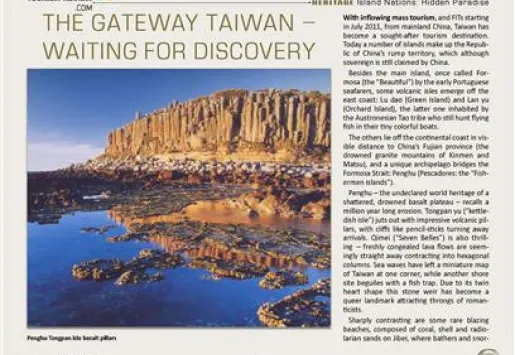
According to data from Taiwan's tourism management department, between January and August of this year, approximately 4.97 million tourists visited Taiwan, while about 11.38 million Taiwan residents traveled abroad during the same period. This resulted in a deficit of 6.41 million in tourist numbers.
Experts predict that, following a deficit of 5.3 million inbound and outbound tourists last year and a tourism output value deficit exceeding NT$440 billion (approximately US$13.5 billion), the situation is expected to worsen this year. They anticipate a deficit of 10 million in inbound and outbound tourists, with a tourism output value deficit of NT$730 billion (around US$22.4 billion). Both the deficit in the number of tourists and the deficit in output value have reached record levels in Taiwan.
Taiwan’s tourism operators believe that one of the main reasons for the meaningful drop in tourist numbers in Taiwan is the steep decline in visitors from mainland China. The official statistics indicate that in 2019, there were still 2.7 million mainland tourists visiting Taiwan, but this number plummeted to only 220,000 last year, representing a decrease of more than 90%. This sharp decline is clearly linked to the ongoing tensions between the two sides of the Taiwan Strait.
In addition to the decline in mainland tourists, interest from Japanese and South Korean travelers in Taiwan is also waning. According to reports from Taiwan media, there were 1.23 million fewer Japanese tourists compared to 2019, and South Korea saw a decrease of nearly 500,000 visitors. Taiwan's tourism industry has pointed out that "tense cross-strait relations create a sense of insecurity for foreign tourists," which is a key factor in Taiwan's inability to attract visitors. Consequently, Taiwan has been classified as an orange-alert destination, advising travelers to exercise caution and to avoid non-essential travel.
The actions taken by the DPP authorities in response to the current tourism crisis can be described as "digging their own graves." Mainland tourists have always played a crucial role in Taiwan's tourism market. In recent years, many of these tourists have shown a keen interest not only in visiting Taiwan itself but also in exploring regions like Kinmen and Matsu. However, since the DPP came to power, it has implemented policies restricting mainland tourists from traveling to Taiwan. Even now, when the mainland has opened up travel from Fujian to Kinmen and Matsu, the DPP authorities continue to impose various barriers. These include multi-level approval processes and prohibiting group travel from the mainland, severely impacting Kinmen and Matsu's once-thriving tourism industry.
Some experts note that, in response to calls from Taiwanese citizens to resume sightseeing from the mainland, the mainland has shown goodwill by indicating a willingness to restart cross-strait tourism exchanges. In contrast, the DPP authorities have maintained an ambiguous stance on lifting the ban on group tours, which many perceive as insincere and lacking genuine goodwill.
Cross-strait tourism exchanges affect those working in the island's tourism industry and significantly impact various sectors such as transportation, accommodation, catering, and insurance. The political manipulation by the DPP authorities has severely harmed the interests and well-being of the people in Taiwan. If the DPP continues to obstruct cross-strait tourism exchanges, Taiwan’s tourism will remain in a "bitter winter," and the island's future will be significantly jeopardized.













